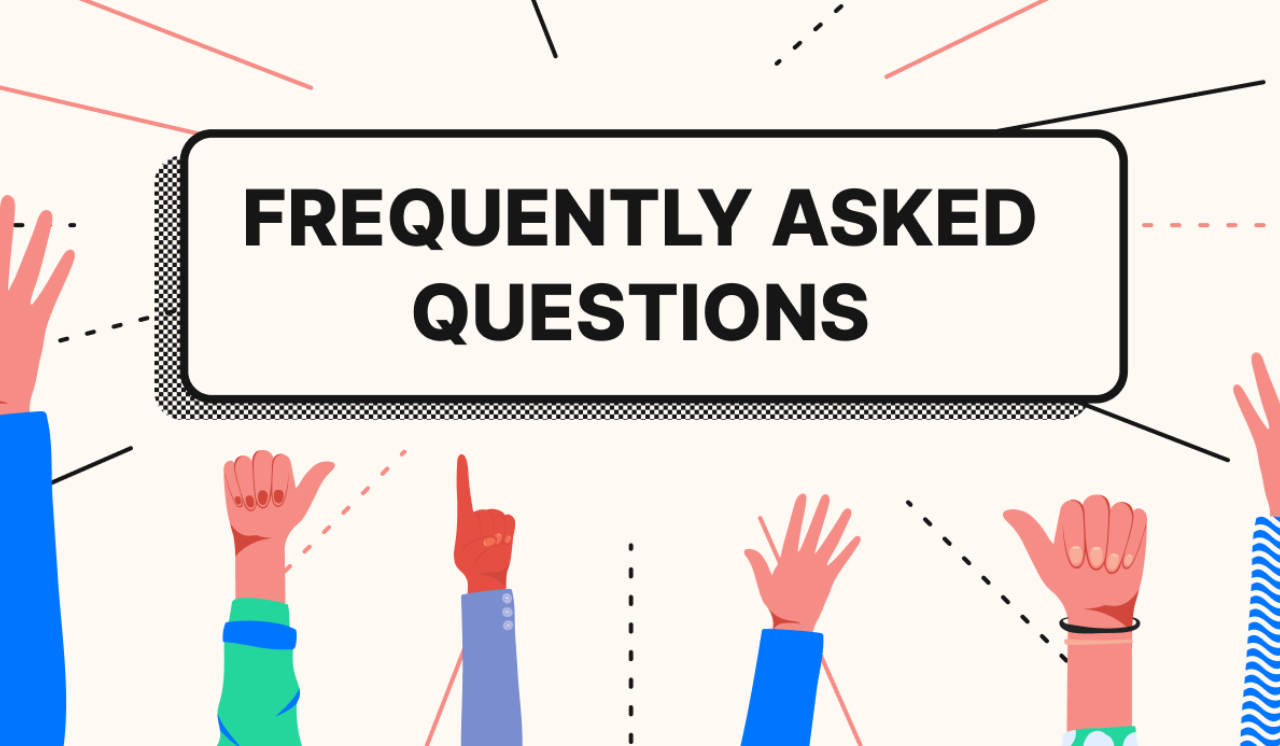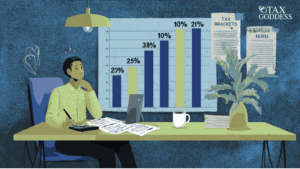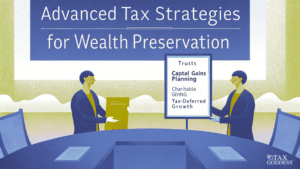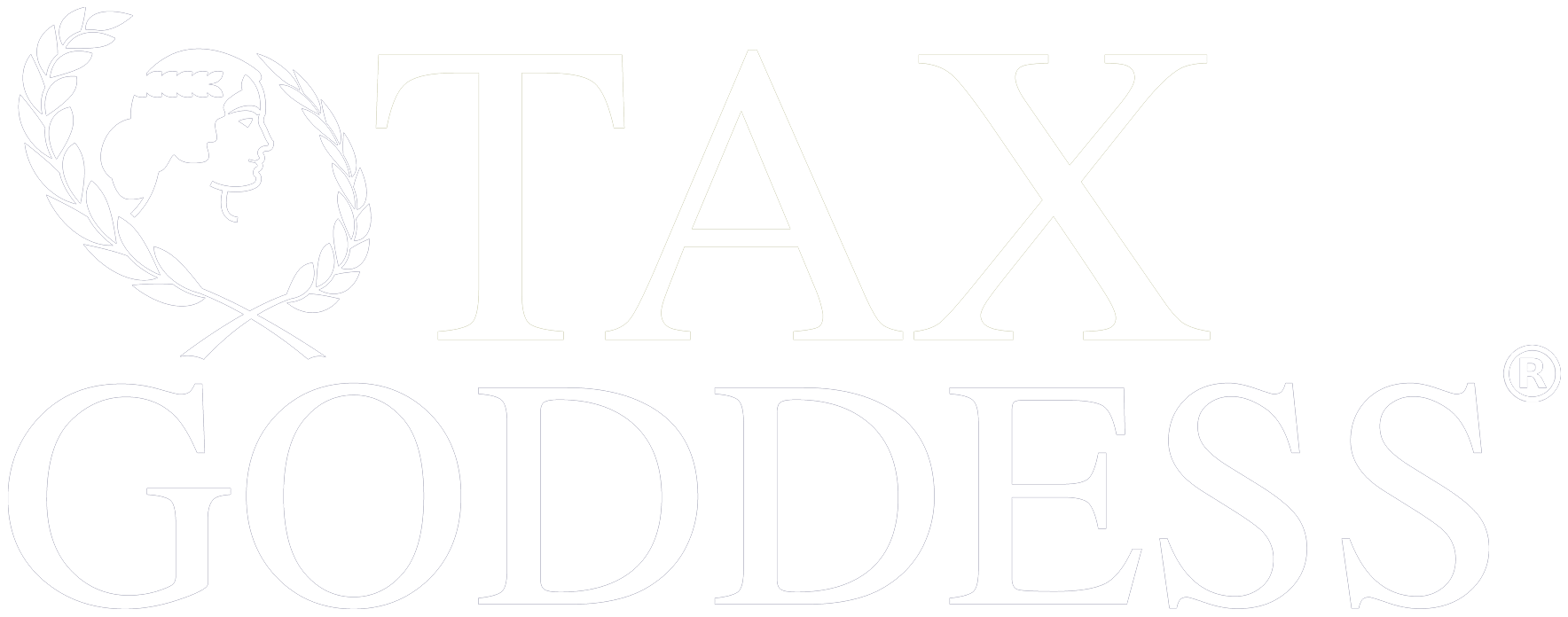The term “clean vehicle credit” refers to a suite of federal tax incentives and credits in the United States designed to promote the purchase of environmentally friendly vehicles. These incentives aim to motivate both consumers and businesses to embrace transportation options that are kinder to our environment. If you’re contemplating the purchase of a clean vehicle and seeking guidance on how to proceed, you’re in the right place. We’ve compiled a comprehensive list of frequently asked questions with thorough answers to help you navigate your decision-making process with greater clarity and direction.
Section 1: Clean Vehicle Credits Overview
What’s a new clean vehicle for the new clean vehicle credit?
A new clean vehicle, for the credit, is one:
- First used by the buyer from January 1, 2023.
- Bought for personal use, not resale.
- Made by a recognized manufacturer.
- Primarily for road use with at least four wheels and under 14,000 pounds.
- Majorly powered by an electric motor with a 7+ kilowatt-hour battery, rechargeable externally.
- Assembled in North America.
To claim the credit, the seller must provide a report to the buyer and the IRS. Fuel cell vehicles qualify, too, with similar conditions.
Where can I find cars eligible for the new clean vehicle credit?
Check out the list on http://fueleconomy.gov/newtaxcredit hosted by the Department of Energy. This list, endorsed by the IRS, includes:
- Battery Electric Cars
- Plug-in Hybrids
- Fuel Cell Vehicles
Double-check eligibility at the time of purchase, and the seller should provide a confirmation report.
How can I verify a new, clean vehicle’s final assembly occurred in North America?
For a clean vehicle credit, the assembly location matters. Here’s how to check:
- Visit FuelEconomy.gov to see if your vehicle is on the eligible list.
- Inspect the vehicle information label at a dealership for assembly location.
- Note: North America includes the US (all 50 states, DC, Puerto Rico), Canada, and Mexico.
- Use the VIN Decoder on the National Highway Traffic Safety Administration (NHTSA) website: https://www.nhtsa.gov/vehicleidentificationnumber.
How can I find the Vehicle Identification Number (VIN) on my car?
The VIN is a 17-character code unique to each vehicle. You can find it on the dashboard near the windshield, on a label on the driver’s side door frame, or on a window sticker of new vehicles. It’s also listed on dealers’ websites or can be obtained by calling a dealership. Once known, the VIN can confirm the car’s final assembly. See FAQ 3 for more information.
If I buy a new eco-friendly car this year but get it delivered next year, when do I get the tax benefit?
The tax benefit for buying an eco-friendly car applies in the year you actually get the car, not the year you ordered it. So, if you get the car delivered next year, that’s when you’ll claim the tax credit.
What’s the new clean vehicle tax credit amount?
Starting January 1, 2023, select clean vehicles qualify for a tax credit of up to $7,500, based on service start date and specific criteria.
For vehicles used on or after April 18, 2023:
Two main criteria: critical minerals and battery components, each worth $3,750.
Credit breakdown:
- Meets no criteria: $0 credit.
- Meets one criterion: $3,750 credit.
- Meets both criteria: $7,500 credit.
For vehicles used on or before April 17, 2023:
- Initial credit: $2,500.
- Vehicles with a battery of at least 7 kilowatt hours qualify for an additional $417, plus $417 for each kilowatt hour over 5, up to $5,000 extra.
- Minimum credit: $3,751 (for 7 kilowatt-hour batteries).
Can you get a refund or roll over the new clean vehicle credit to next year?
The new clean vehicle credit can only be used to lower the amount of taxes you owe; it won’t give you a refund. If you’re using the credit for personal reasons, you can’t carry over any unused portion to the next year. But if you’re using the credit for your business, you can carry over any unused part to future years.
What does “original use” mean in terms of the new clean vehicle credit?
“Original use” refers to the first time a vehicle is actually used after it has been sold, registered, or given a title. If someone else has already bought, registered, or given a title to the vehicle and used it for any reason, even just as a display model at a dealership, then it’s not considered a “new clean vehicle” for the credit. If a business buys the vehicle to lease it to someone else, the business is considered the original user. A test drive by a potential buyer doesn’t make the vehicle ineligible for the credit as long as the dealership hasn’t officially registered it as a display model.
What does it mean to be a qualified manufacturer?
A qualified manufacturer is a company that makes vehicles and has a formal, written agreement with the IRS. This agreement says that the company will regularly send IRS reports that include details like the Vehicle Identification Numbers (VINs) for each car, truck, or other vehicle they make. The IRS keeps a list of these qualified manufacturers, and you can find this list on their website under the section for Clean Vehicle Qualified Manufacturer Requirements.
Do I need to include my car’s VIN to qualify for the clean vehicle tax credit?
Answer 10: Yes, you do. When you’re filling out your taxes, you need to write down the identification number of your new clean car on a specific form, called Form 8936. This form is for claiming the electric car tax credit.
Can more than one person get the tax credit for buying a new clean vehicle?
No. Even if multiple people own the car, only one person can get the tax credit for it. This includes married couples who file taxes separately but jointly own the car. If a married couple is filing together, either one can claim the credit. The person claiming the tax credit should have their name and tax ID number listed on the sales report from the seller. So, if more than one person owns the car, decide who will claim the tax credit and let the seller know so they can put that person’s name on the sales report.
What if you cancel, return, or quickly resell a new, clean vehicle you just bought?
If you cancel the sale before actually having the car in your possession, you can’t get the clean vehicle tax credit. However, the next buyer could still get it.
If you return the car within 30 days after getting it, you also can’t claim the tax credit. Plus, the next buyer won’t be able to claim it either because the car is considered “used” for tax purposes.
Keep in mind that reselling the car within 30 days of getting it disqualifies you from claiming the credit. The car is considered as bought for resale, and the next buyer can’t claim the credit either.
SECTION 2: Income and Price Limitations for the New Clean Vehicle Credit
Could how much I earn stop me from getting the new clean vehicle credit?
Yes, if you earn above a certain amount, you can’t get this tax credit. The limits are based on your modified income from either the year you got the clean car or the year before.
Here’s the income cap based on how you file your taxes:
- Married or qualifying widow(er): $300,000
- Head of household: $225,000
- Everyone else: $150,000
Your modified income is your total income (from line 11 of your tax form) plus any foreign income or money made in Puerto Rico or American Samoa. If your filing status changes from the previous year to the current year, check the income limit for both years to see if you can get the tax break.
How do income limits affect my business partnership when we buy and use a new, clean vehicle?
If your business is a partnership or an S corporation and you buy a new eco-friendly car, the income limits for tax credits apply to the individual partners or shareholders in the business.
Is there a price cap on new clean vehicles to get a tax credit?
Yes, there is. The most you can spend on a new van, SUV, or pickup truck is $80,000, and for other types of cars, it’s $55,000. If the car costs more than these limits, you can’t get the tax credit. You can find a list of cars that qualify for this tax credit, along with their prices, on the FuelEconomy.gov website.
How can I confirm the manufacturer’s suggested retail price (MSRP)?
You can find the suggested price, or MSRP, on a label on each car at the dealership. This price includes the basic cost of the car plus any extra features added by the maker before the dealer acquired it. It doesn’t include shipping costs, add-ons by the dealer, or any taxes and fees.
Can I still get the new clean vehicle credit if the total cost of my new car, including taxes and other fees, surpasses the MSRP?
Yes, you can. The credit is based on the car maker’s recommended price, not on how much you actually end up spending on the car. Check FAQ 3 to find out how to figure out the recommended price.
If there’s a special deal that lowers the car’s price, can I still get the clean vehicle credit?
You can still get the credit because it’s based on the MSRP, not the discounted price you paid. See FAQ 3 for details on how to find the original list price.
How can I tell what type of vehicle I have to find out the suggested retail price limits?
To know what category your vehicle falls under, like SUV, pickup truck, or van, look at the fuel economy label on your car’s window sticker or check on the website FuelEconomy.gov. If these sources label your vehicle as an “SUV,” “pickup truck,” or “van,” then a maximum suggested price of $80,000 applies. This is true for several specific types of these vehicles, such as small or standard SUVs and pickup trucks, as well as minivans and vans.
If your vehicle isn’t in any of these categories, a different maximum suggested price of $55,000 will apply. For a list of clean vehicles that qualify for a new tax credit, check out the user-friendly list on FuelEconomy.gov provided by the Department of Energy.
Can I get the clean vehicle tax credit if my vehicle’s classification changes after purchase?
Answer 8: Yes, if you started using a qualified vehicle on or after January 1, 2023, you can get the tax credit based on new rules from February 3, 2023. The maximum price for SUVs, vans, and trucks remains at $80,000. Some cars that used to have a $55,000 price cap are now counted as SUVs, so they qualify for the $80,000 cap. This includes specific 2022 and 2023 models of the Cadillac Lyriq, Ford Mustang Mach-E, Tesla Model Y, Volkswagen ID.4, and Ford Escape Plug-In Hybrid. To get the tax credit, get a report from the seller. If you start using the car on or after April 18, 2023, it also has to meet some extra requirements about where its minerals and batteries come from.
What do car sellers need to give buyers so they can get the new clean vehicle tax credit?
The seller has to give a report to the buyer and the IRS with the following details:
- Both the seller’s and buyer’s names and tax IDs
- The car’s identification number (VIN)
- The car battery’s power capacity
- Proof that the buyer is the first person to use the car
- The date and price of the sale
- The maximum tax credit the buyer can get for this car
- For sales after December 31, 2023, any transferred credits used for the purchase
- A statement from the seller saying all this information is true.
When does the seller have to give the report to the taxpayer?
The seller should give the report to the buyer on the same day they buy the vehicle. If the buyer didn’t get a report because the vehicle didn’t qualify before but does now (maybe due to a change in its type or price limits), they can still ask for a report from the seller after buying it. For more info, check Revenue Procedure 2022-42 and Revenue Procedure 2023-33.
How do sellers send sales reports to the IRS?
If you sold a vehicle in 2023, you have until 15 days after the year ends to send a report to the IRS. You can use the method the IRS gives you or their Energy Credits Online platform. Starting in 2024, you’ll need to report sales within 3 days using Energy Credits Online.
SECTION 3: When the New Requirements Apply to the New Clean Vehicle Credit
Did the requirements for getting a tax credit for new vehicles change after the Inflation Reduction Act of 2022 was passed on August 16, 2022?
Yes, starting on August 17, 2022, to get the tax credit, the new clean vehicle must be made in North America. Vehicles bought before this date are under the old rules.
What’s new for the vehicle credit starting January 1, 2023?
Starting January 1, 2023, here are the key updates to the vehicle credit:
- The battery must have at least 7 kWh capacity.
- The car must be made by an approved maker.
- Price caps are in place, depending on the type of car.
- Income limits affect who can get the credit.
- You have to put your car’s VIN on your tax form.
- Dealers must share sale details with you and the IRS.
- From 2024, you can pass the credit to the dealership.
Does the rule that reduced or got rid of the credit for manufacturers that sold more than 200,000 vehicles still affect cars sold after January 1, 2023?
No, that rule doesn’t apply to cars sold on or after January 1, 2023. It only affected cars sold before that date.
When do the new rules about critical minerals and battery parts for clean vehicles start?
The new rules start on April 18, 2023. They apply to clean vehicles that are used for the first time on or after that date. If you ordered or bought your vehicle before April 18 but start using it on or after that date, these new rules will still apply to you.
What if I order a clean vehicle this year but get it next year? When do I apply for the tax credit?
If you buy a new eco-friendly car after August 16, 2022, you get the tax credit for the year you actually get the car. The rules about who qualifies can change, so it depends on when you take the car home. But if you signed a contract to buy the car between January 1, 2022, and August 15, 2022, and only get the car after August 16, 2022, you’ll claim the tax credit for the year 2022. Depending on when you get the car, you can add this credit to any type of tax form for 2022.
If I buy a new, clean vehicle after August 16, 2022, but only get it after the new rules about minerals and batteries are announced, will my car still qualify for the credit?
It depends on if your car meets the new rules about minerals and batteries. The important date is when you actually got the car, not when you ordered it. Cars received on or after April 18, 2023, have to meet the new rules, even if you bought them earlier. For cars bought before August 16, 2022, different rules apply.
If I buy a new eco-friendly car after August 16, 2022, but get it in 2023, do the rules about income and car price still apply?
Yes, the rules about income and the car’s price apply if you get the car in 2023.
What do I need to do if I bought or agreed to buy a new clean vehicle between January 1, 2022, and August 16, 2022, but didn’t start using it until after December 31, 2022? When can I claim a tax credit?
If you agreed to buy or bought a new clean vehicle between January 1, 2022, and August 16, 2022, but only got it after August 16, 2022, you can still get a tax credit. You’ll follow the rules in place on August 15, 2022. You’ll need to claim this credit on your 2022 tax return.
You can’t claim the credit until you actually have the vehicle. Don’t file your taxes too early if you haven’t received the vehicle by the tax filing deadline. You might want to extend your filing deadline if needed.
If you get the vehicle after filing your 2022 taxes, you can update your tax return for 2022 to claim the credit. You usually have three years from when you filed your original return or 2 years from when you paid the tax to update your tax return.
If I buy a new clean vehicle in 2022, but it gets delivered in 2023, will it still be affected by the sales limit set by the manufacturer?
Yes, if you bought a vehicle from a maker that’s already sold 200,000 cars by the end of 2022, you won’t get the special credit, even if you get the car in 2023.
Section 4: Eligibility Rules for the Previously-Owned Clean Vehicles Credit
What’s the used clean vehicle credit § 25E?
The used clean car tax credit gives you up to $4,000 off your taxes if you buy a used clean vehicle for $25,000 or less. To get this discount, you have to earn a certain income, and the car’s only other sale since August 16, 2022, should be from the first owner to you.
What counts as a “previously owned clean vehicle” for getting the special tax credit?
A “previously owned clean vehicle” is a car that meets these rules:
- It’s at least two model years older than the year you buy it.
- You’re not the first person to use this car.
- You buy it from a dealer for $25,000 or less, and you’re the first one to claim this tax credit since August 16, 2022.
- The car either:
- Runs on a fuel cell and weighs less than 14,000 pounds,
- Or, it’s made by a qualified company, weighs less than 14,000 pounds, uses an electric motor with a battery that’s at least seven kilowatt-hours and can be charged from an external power source.
The dealer has to give you and the IRS a report with details about the car and the sale.
How can I determine if a pre-owned clean vehicle is eligible for a tax credit?
Refer to the Used Electric Vehicle Credit list below for details on vehicle eligibility. Moreover, prospective purchasers should confirm that their income falls below specific limits and verify the vehicle’s sales history to ascertain that their acquisition counts as the initial transfer of the pre-owned vehicle subsequent to August 16, 2022, excluding the transaction involving the vehicle’s first user.
Visit fueleconomy.gov/usedtaxcredit for a list of eligible manufacturers and models
How can I find out if a used, clean vehicle can get me a tax credit?
Check the Used Electric Vehicle Credit list to see if the car you’re interested in is eligible. Make sure you earn below a certain amount of money. Also, make sure you’ll be the first person to own the car after its original user, and that it was first used after August 16, 2022. For a list of eligible cars, go to fueleconomy.gov/usedtaxcredit.
Who qualifies to get the tax credit for buying a used clean vehicle?
You can get this tax credit if:
- You’re buying the car to use it, not sell it.
- No one else is claiming you as a dependent on their taxes.
- You haven’t gotten this credit for another used eco-friendly car in the last three years.
- Your income isn’t too high.
How much can you get for the used clean vehicle credit?
You can get up to $4,000 or 30% of the car’s purchase price, whichever is less, for buying a used clean vehicle.
What does “original use” mean for a used clean vehicle?
“Original use” means the first time someone uses the car for personal or work reasons.
What defines the initial transfer rule for qualifying a sale of a pre-owned clean vehicle?
It’s identified as the vehicle’s first change of ownership after August 16, 2022. This applies specifically to the pre-owned clean vehicle credit, excluding transfers to the original vehicle user. Notably, the vehicle’s original owner selling to a dealer, or any subsequent dealer transactions, doesn’t disqualify the vehicle from this credit under the initial transfer rule. Sellers are responsible for checking vehicle history reports. They use this information to confirm the vehicle’s eligibility and to prepare seller reports.
What’s the rule for a used clean vehicle to qualify for the first-time sale credit?
The first time a used clean vehicle is sold after August 16, 2022, it can qualify for a credit. But this only applies if the car isn’t sold back to its first owner. Selling the car to a dealer doesn’t affect its eligibility for this credit. Sellers should check the car’s history to confirm it meets the rules before reporting the sale.
Can a company buy a used, clean vehicle and get a tax credit for it?
No, only individual people can get this tax credit, not businesses.
Can I get a tax credit if I buy a used, clean vehicle from someone who’s not a car dealer?
No, you can only get the tax credit if you buy a used, clean vehicle from a licensed dealer. A licensed dealer is someone who has permission from the state or other authorities to sell cars. This dealer can also sell cars outside the area where they got their license.
Can I get a tax credit for buying a used eco-friendly car if I order it in 2022 but get it in 2023?
Yes, you can, as long as you meet all the other requirements.
Can I get a tax credit for a used eco-friendly car if the first owner already got credit for it when it was new?
Yes, you can, as long as the used car still meets all the other requirements for the credit.
What if I cancel my purchase or return or resell the car soon after buying it?
If you cancel the sale before you actually get the car, it could still be eligible for a tax credit if someone else buys it later. If you return the car within 30 days, it can’t get the credit again unless the car’s history doesn’t show the return. If you resell the car within 30 days, you won’t be eligible for the credit, and the next buyer can’t get it either.
Section 5: Income and Cost Limits for Used Clean Cars
Can your income be too high to get a tax credit for buying a used, clean vehicle?
Yes, you won’t get credit if you make more than a certain amount. If you’re married, you can’t earn more than $150,000. If you’re the head of the household, it’s $112,500. For everyone else, it’s $75,000.
Is there a maximum price for the used clean car to get the credit?
Yes, the car can’t cost more than $25,000, including delivery but not including taxes and fees.
Section 6: How to Claim the Tax Credit for Used Clean Cars
What info do dealers have to give buyers?
Dealers must give you a report with details like the car’s identification number and battery capacity.
Do I need to include the car’s identification number on my tax form?
Yes, you’ll need to put it on Form 8936, Schedule A.
Is the tax credit refundable or can it be carried forward?
No, you can only use the credit in the year you got it, and it can’t be refunded.
Section 7: Tax Credits for Commercial Clean Vehicles
Who can claim the tax credit for buying a commercial clean vehicle?
Businesses that buy a qualified clean commercial car can claim a tax credit.
What counts as a qualified commercial clean vehicle?
It must be a clean vehicle used for business, made by a qualified manufacturer, and should meet certain battery and environmental requirements.
How much credit can you get?
You can get up to 15% of the car’s cost as a credit, capped at $7,500 for smaller cars and $40,000 for larger ones.
What does “incremental cost” mean?
It’s the extra amount you pay for a clean vehicle compared to a regular vehicle.
Can leasing businesses get the tax credit?
It depends on who technically owns the car, based on the lease terms.
How do you know if a lease counts as a sale for tax purposes?
It depends on factors like how long the lease lasts and if there’s an option to buy the car cheaply at the end.
What if the lease is actually counted as a sale?
Then the person leasing the clean vehicle may be eligible for the tax credit, not the leasing company.
What does “subject to depreciation” mean?
It means the car must be used for business.
What counts as “business use”?
Any use in your trade or business.
Can I get a credit for a new, clean commercial vehicle if I already got one for the same vehicle?
No, you can’t get credits for the same car twice.
Section 8: How to Transfer Tax Credits When Buying a Clean Vehicle
What’s a transfer election?
It’s a choice to give your tax credit for buying a clean car to the dealer. In return, the dealer lowers the car’s price by that amount. You can also keep the credit and claim it on your tax return later.
Who can get this transferred credit?
Only dealers who are registered with the IRS can get it.
How do I qualify to transfer the credit?
You need to meet all the requirements for getting a tax credit for buying a clean vehicle.
What if my tax due is less than the credit?
You can still transfer the full amount to the dealer. Neither you nor the dealer have to give any of it back.
What does the dealer have to tell me?
The dealer must give you a written notice with details like the car’s price and your tax credit amount, among other things.
What do I need to give the dealer?
You’ll need to give your tax ID, a copy of your ID, and some confirmations about your income and how you’ll use the car.
How many times can I do this in a year?
You can transfer the tax credit up to two times in a tax year.
Can I transfer part of the credit?
No, you have to transfer the whole amount to the dealer.
When is this option available?
It starts for cars bought after December 31, 2023, and goes until December 31, 2032.
What if I am a high-income earner?
You’ll have to pay back the tax credit amount when you file your tax return.
What if the IRS rejects the clean vehicle dealer’s report?
If that happens, you can’t claim the tax credit.
What do I get for transferring the credit?
The dealer will give you either cash or a lower price on the car.
Can I change my mind later?
No, once you make the choice, it’s final.
How quickly does the dealer get paid by the IRS?
Within 48-72 hours after submitting the required forms.
Is the dealer required to check my income?
No, they don’t have to. And they don’t have to return the money even if you end up earning too much.
Do I have to transfer the credit?
No, it’s your choice.
What if I use a clean vehicle for both work and home?
You can only transfer the credit if you’ll mainly use the car for personal reasons.
What if I return the clean vehicle?
If you return the clean vehicle early, the credit gets canceled. Any payments made related to the credit will need to be returned.
When do I have to pay back the credit?
If you end up not qualifying for the credit, you’ll have to pay it back to the IRS, not the dealer, when you file your taxes.
Section 9: How to Register as a Car Seller for Clean Vehicle Tax Credits
Note: Registration for sellers is in the works. Keep an eye on IRS.gov/cleanvehicles for updates.
Can buyers get tax credits for clean vehicles if the seller isn’t registered with the IRS?
No. From January 1, 2024, you can only get credits if the seller is registered with the IRS and sends a sales report online at the time of sale. The seller must give you a copy of this report.
Who needs to send these online sales reports, and who can get advance payments?
All sellers have to send sales reports starting January 1, 2024. If you’re a seller in good tax standing, you might qualify for advance payments after the IRS checks your info.
Who should register the seller online?
Someone who can make legal decisions for the seller should register online. From December 2023, more than one person can be authorized to do this.
What info do I need to register?
You need basic business info like your EIN, address, phone, and email. If you want advance payments, you’ll need to provide extra details online.
Do I need a state license to register?
A5: Yes, to sell used clean vehicles or get advance payments, you must be state-licensed. Unlicensed sellers still need to register online.
What’s the difference between registering for sales reports and advance payments?
Registering for sales reports lets you send those reports. If you also register for advance payments, you can request these from the IRS. Only licensed sellers can get advance payments.
Do I need to register for both?
No, you can register for sales reports without getting advance payments. Only licensed sellers can register for advance payments.
When can I start getting advance payments?
You can request advance payments starting January 1, 2024.
Can I finish my registration for advance payments later?
Yes, you can complete it at any time.
Is there a separate registration for new and used cars?
No, one registration covers both. Only licensed sellers can report sales of used clean vehicles.
How will I know my registration status?
You can look it up online.
Can I try registering again if it fails?
Yes, you can retry.
What if I get a tax error?
That means you have unpaid taxes or overdue returns.
How can I fix a tax compliance issue?
Pay all your due taxes and file your returns. If you’re on a payment plan and up-to-date, you’re good. If not, you can’t get advance payments until you fix it.
Do direct-selling manufacturers need to register?
Yes, they also need to register to get advance payments and send sales reports.
How do I update my registration?
You can change contact info anytime online. For other changes, you’ll need to register again.
Does my registration expire?
Yes. It will last for 10 years.
Who do I contact if I have registration problems?
Please contact IRS.Clean.Vehicles.Dealer.Info@IRS.gov with questions.
Section 10: How to Get Tax Credits for Buying New and Used Clean Vehicles Starting in 2024
What info do you need to give the seller when you’re buying an eco-friendly car to get the tax credit?
You need to give the seller your name, tax ID number (which could be your Social Security number), and a valid ID. The seller needs this to report the sale to the IRS.
How do you know if you can get a tax credit for your new or used clean vehicle?
Starting from January 1, 2024, the seller will send a report to the IRS online. If the IRS accepts the report, that means the car’s Vehicle Identification Number (VIN) is on the list of cars that qualify for the tax credit. For used cars, the price should be $25,000 or less and the seller should confirm the car’s history to make sure it qualifies. Once the IRS accepts the seller’s report and the seller gives you a copy, you can be confident that you can get the tax credit. Just make sure you also meet any other requirements listed in the guidelines.
For more info, check out the IRS guidelines on which new and used eco-friendly cars are eligible for tax credits.
Key Takeaway
There is so much to understand about clean vehicle credits. Hence, taking full advantage of this type of tax credit demands a lot of planning and attention to detail. For the best outcome, you cannot go wrong with recruiting the services of an expert tax consultant or tax strategist.
On the bright side, you don’t need to break a sweat in your quest to find the right tax strategist to help you navigate the overwhelming landscape of clean vehicle credits. At Tax Goddess, we specialize in identifying smart and legal ways to help business owners and entrepreneurs claim maximum tax benefits. Don’t hesitate to seek expert advice from the Tax Goddess team today.








